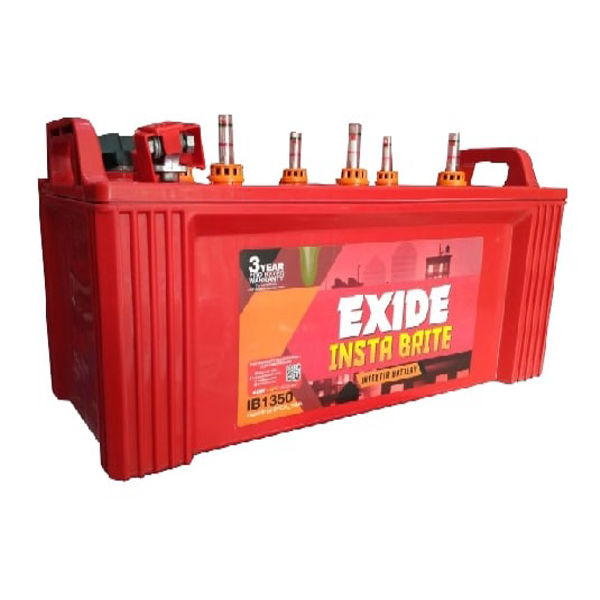10KVA UPS
The Vertiv™ Liebert® GXE 6000-10000VA UPS is part of the Liebert GXE Series, which provides line-interactive power protection with advanced features, making it an ideal solution for small and medium-sized businesses, IT infrastructure, and critical equipment in need of reliable power backup. The Liebert GXE UPS offers features like Automatic Voltage Regulation (AVR), extended battery support, efficient performance, and compact design.
Here are all the key details and specifications for the Vertiv™ Liebert® GXE 6000-10000VA UPS:
Vertiv Liebert GXE 10000VA UPS (10kVA)
Power Rating: 10kVA / 10000VA
Output Power: 6000W to 8000W
Input Voltage: 170V - 280V
Output Voltage: 230V ± 10%
Waveform: Simulated Sinewave (or Pure Sinewave for specific models)
Battery Type: Sealed Lead-Acid (SLA) / VRLA
Battery Capacity: Typically 12V, 18Ah or 24Ah (with external battery options)
Charging Time: 4-6 hours for a full recharge
Backup Time: 10-40 minutes depending on load and battery configuration
Form Factor: Tower or Rackmount
Interfaces: USB/Serial, SNMP (optional)
Additional Features: AVR, Smart Battery Management, LCD Display, Overload Protection, Alarms, External Battery Support
Key Features:
Topology:
Line-Interactive – This topology offers good protection and ensures that your equipment receives stable power during fluctuations, such as brownouts or overvoltages, without using battery power unnecessarily.
Power Rating:
6kVA to 10kVA (6000VA to 10000VA) – Suitable for medium to large-sized IT infrastructure, servers, networking equipment, and other critical applications that need consistent and reliable power.
Output Power:
6kVA (6000VA) models typically provide 3600W - 4800W of output power.
10kVA (10000VA) models provide 6000W - 8000W of output power, depending on the specific model and configuration.
Input Voltage Range:
170V - 280V (wide input voltage range) – Provides protection from both high and low voltage fluctuations.
Output Voltage:
230V ± 10% – Standard output voltage suitable for most business and IT applications.
Waveform Type:
Simulated Sinewave – In line-interactive mode, the output waveform is simulated sinewave. However, the UPS is designed to handle sensitive loads well.
Automatic Voltage Regulation (AVR):
The Liebert GXE UPS comes with AVR that corrects voltage fluctuations without switching to battery power, reducing battery wear and extending the overall life of the system.
Battery Type:
Sealed Lead-Acid (SLA) or VRLA (Valve-Regulated Lead-Acid) batteries – Commonly used for UPS systems due to their reliability and low maintenance.
Battery Capacity:
12V batteries, with 18Ah, 24Ah, or higher capacity depending on the model and configuration.
Extended Battery Support: The UPS can be connected to additional battery packs for longer backup runtimes if needed.
Charging Time:
Typically, the battery recharge time is around 4-6 hours for a full charge from a discharged state.
Backup Time (Runtime):
Backup time varies depending on load. For example:
At 50% load, the runtime could range from 30 minutes to 1 hour.
At full load, the backup time may range from 10-20 minutes, depending on the model and load.
External Battery Packs can extend runtime significantly for longer power outages.
Form Factor:
Tower or Rackmount options are available, making the Liebert GXE adaptable for different environments, such as server rooms or small data centers.
Rackmount models are designed for 19-inch racks and are ideal for installations in IT environments.
Cooling:
Fan-assisted cooling for efficient thermal management.
Interfaces & Monitoring:
USB/Serial Communication Ports for connection with monitoring and management software.
SNMP Slot: Provides optional SNMP (Simple Network Management Protocol) support for remote monitoring and management.
LCD Display: Many models include an LCD screen that shows real-time UPS status, load, battery condition, input/output voltage, and other important information.
Smart Battery Management:
Ensures that the batteries are efficiently charged and maintained, extending the life of the battery bank.
Advanced battery diagnostics can help predict failures and improve overall UPS reliability.
Overload Protection:
Provides protection against equipment overload and ensures that the system shuts down or enters bypass mode in the event of a fault condition.
Audible Alarms:
Alarms provide real-time alerts for conditions like battery low, overload, fault conditions, and input/output abnormalities.
Green Features:
Energy-Efficient: Offers high energy efficiency to reduce operational costs.
ECO Mode: In certain conditions, the system can operate in ECO mode to provide further energy savings, reducing electricity consumption.
Send
Message








